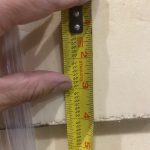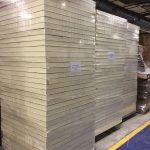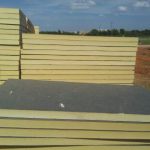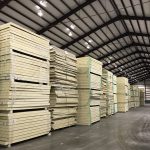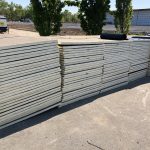Polyisocyanurate (ISO)
ISO panels have the highest nominal R-value of the three most common types of rigid-foam insulation, R-5.7 to R-6. Its blowing agent is pentane, which has a very low global warming potential. Because ISO starts as liquid foam and has to be sprayed against a substrate to form a rigid panel, all ISO panels are faced. Foil-faced ISO panels are considered vapor impermeable. Paper and fiberglass facers are more permeable and can be used without creating a vapor barrier. Although the nominal R-value of polyiso is the highest of the three major types of rigid foam, its cold weather performance is lower: As the temperature drops, so does the R-value. Polyiso is not rated for ground contact.
Click on below thumbnails to see the big images:
Common Applications:
- Pole Barns – walls, ceilings, roofs
- Steel Buildings – walls, ceilings, roofs
- Flat and Low Slope Roofs – commercial/industrial/institutional
- Residential Housing – walls, attics, between studs
- Garages – walls, ceilings, roofs
- Timber Frame Houses – cathedral ceilings
- Berm or Earth Houses
Learn More:
- Adapted from article: Rick Arnold, The Daily Fix (Online) “Which Rigid Insulation Should I Choose?”, Fine Homebuilding, https://www.finehomebuilding.com/2009/05/01/which-rigid-insulation-should-i-choose (Accessed: August 31, 2020)
- Polyisocyanurate Manufacturers Association (PIMA) https://www.polyiso.org/

